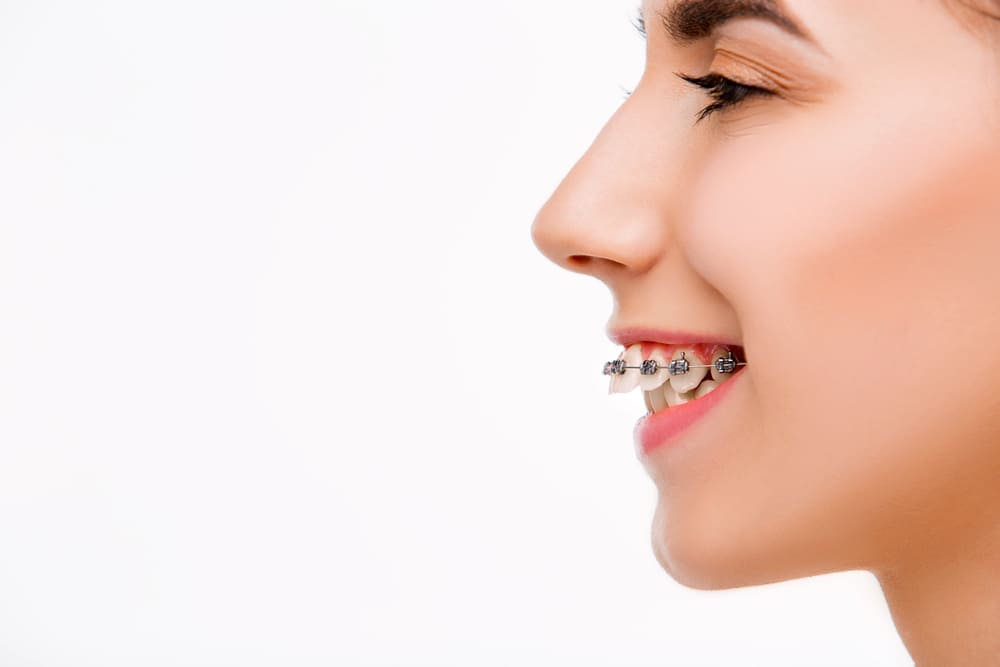Dental braces have become much more common today in the modern society but there is evidence that reveals that their use dates back to ancient times. It sounds almost bizarre that the concept of braces was envisioned even before the modern era. But humans, even in the ancient century, had a clear intent – they wanted straight teeth and a perfect smile. Before moving on to the history of braces, let’s understand the basics of how braces work.
The Science Behind Braces
Braces leverage engineering principles. If constant, calculated and mild pressure is applied on teeth, they tend to move in the correct position. The wires apply pressure on the periodontal ligament that holds the teeth. And since it is very sensitive, too much force in a short period of time can result in tooth loss. Hence, braces are kept on for long enough so that there is a small change every 30 days or so until the teeth retain their correct position.
Ancient Braces
It is fascinating that correcting crooked teeth for a perfect smile was envisioned thousands of years ago in the ancient era. According to the archaeological findings, some mummified skeletons were found with metal pieces attached to their teeth. A cord made from animal skin which was also referred to as ‘cat gut’ was found attached to the teeth according to the researchers.
The First Ever Documentation
An ancient Roman, Aulus Cornelius Celsus documented his attempts at straightening his teeth by applying pressure with his hands at regular intervals. He also reported success, however, it’s a bit difficult to back up his findings now.
Also, a tomb in Egypt revealed that gold wire was used to bind teeth, and this was the first wire found in documentation used for ligating.
Advancements in France
There weren’t any advancements in the teeth straightening method until the 18th century when in 1728, Pierre Fauchard wrote a book titled “The Surgeon Dentist” and talked about a Bandeu device which looked like a mouthguard and helped teeth stay in their correct position.
Later in 1757, Pierre Bourdet expanded on Fauchard’s Bandeu device to improve it. He also discovered that the rear wisdom teeth can be removed to avoid the crowding of teeth.
Before “Braces” Became Famous
Before the term ‘braces’ became widely used, the orthodontic world saw many advances.
-
1819
Christophe-Francois Delabarre invented a half-circle device – a wire crib – which could be placed on the teeth.
-
1843
Dr. Edward Maynard connected a gum elastic to the wiring inside the mouth to ease the movement and make the treatment comfortable for patients.
-
1850
To elaborate braces, E.J. Tucker cut the rubber tubing and fit it comfortably inside the mouth.
-
1864
Dr. S.C. Barnum later invented the rubber dental dam. It is a latex sheet meant to keep teeth dry while an orthodontist works on them.
-
1893
Henry A. Baker devised “Bake anchorage” to combine the rubber tubing with the wire crib. This avoided the need to remove molar teeth to make space for other teeth while straightening.
-
1894
Eugene S. Talbot incorporated X-rays into the procedure. This prevented the teeth that were out of sight from being impacted.
1900 – When Braces became famous
In the early 1900s, the term became popular. However, braces were still expensive and not everybody could afford them. Dentists would wrap bands made of varied materials around the teeth, which would then be connected by a wire. Most of the dentists would use ivory, copper or zinc as wires. But patients who could afford expensive treatments preferred wires of silver or gold. Though gold wires would require frequent adjustments since gold grows soft because of heat.
The Breakthrough in the 1970s
The use of a dental adhesive to hold brackets above the teeth was the biggest breakthrough in the 1970s which made the treatment less painful and more comfortable. As the dental techniques improved, gold silver and other metals were replaced by stainless steel which made braces more affordable and convenient.
Invisalign
Invisalign is the most advanced and ground-breaking technology to date in the orthodontic world. Clear braces were invented in 1997 by Zia Chishti and Kelsey Wirth, Stanford University graduates who had no professional dental training. They discovered that teeth shift place post orthodontic treatment on not wearing the plastic retainer. So, they combined a 3D technology with the plastic retainer. The technology takes images of the patients’ teeth and shows the slow progression required to straighten the teeth. Based on which, clear moulds are created that the patient would wear for a specified amount of time to move the teeth into place.
We have come a long way from ‘cat gut’ to clear braces. Who would have imagined 5000 years ago that technology would have such a big impact? But right now, we are just thankful!
If you need to know what kind of braces you should go for, call for a consultation on 559-439-0425 today!

Dr. Brian Thurman has spent his entire life enjoying all the beauty that California has to offer. A Fresno native, he still escapes to the ocean or the mountains whenever his busy schedule allows. Driven by his love for natural beauty, Dr. Thurman enjoys creating beautiful smiles and healthy bites that last a lifetime. He is proud to be the only Ivy League trained Orthodontist in the Fresno/Clovis area.

